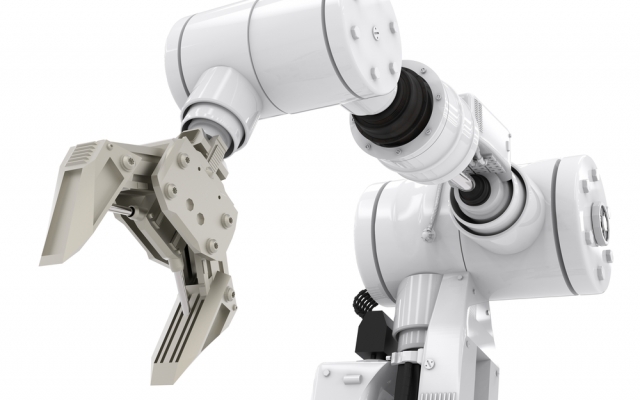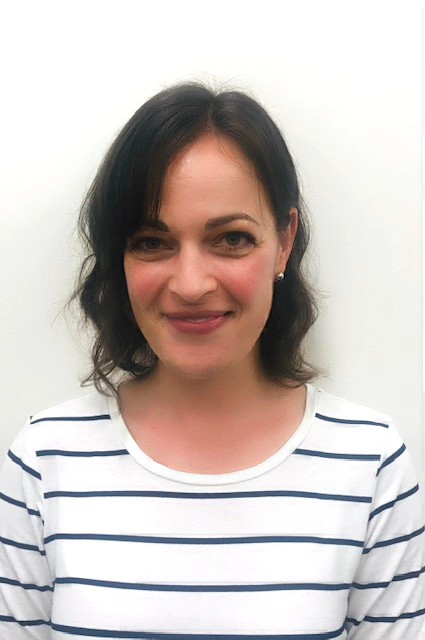
Dr Heba Khamis is working for the US Office of Naval Research Global to create a tactile sensing system for remotely neutralising underwater mines.
What is it about the human sense of touch that makes us so good at dexterous manipulation? This is the question that originally captivated Dr Heba Khamis in 2014, and her rapid progress in finding answers, along with colleagues Associate Professor Stephen Redmond and Benjamin Xia, has resulted in a fascinating project funded by the US Office of Naval Research Global. 
The research aims to develop a tactile sensing system for a remote device that will disarm mines in turbid water where vision is poor. Such a device would be controlled by a remote human operator via a haptic display. The two-year project is worth almost $300,000 and started in January 2018.
“During our original research we discovered a few things about the human finger and the way it might sense friction that enabled us to design our PapillArray Multimodal Tactile Sensor. This sensor is designed to give a robotic hand comprehensive tactile sensing for gripping to allow similar dexterity to a human hand,” says Khamis, who is a Lecturer in the Graduate School of Biomedical Engineering.
“We developed the sensor, did a proof-of-concept, then successfully applied to the Office of Naval Research Global for funding to take the research further.”
According to Khamis, there are very few commercial tactile sensors available for robotic gripping, and the ones that do exist are not very comprehensive. They are able to measure things like pressure and force, but none have the ability to detect how slippery an object is, which is essential when it comes to working out how hard you need to grip.
“Weight and slipperiness are the two things that affect how hard you grip, but all the sensors currently available are missing this vital capability. They can only grip an object with a fixed force or as hard as they can, which is fine for things that are not fragile, but if you’re trying to disarm a mine you sure don’t want to crush it,” Khamis explains.
There are so many possibilities for this technology, which has a lot of untapped potential at the moment.
Dr Heba Khamis, Lecturer, UNSW Graduate School of Biomedical Engineering
Almost a year into the project and Khamis says they are progressing well. “We already had a sensor that can deliver quite sophisticated information, and during the last few months, we’ve instrumented it. This means we’ve put in the electronics required to extract the signals we want,” she continues.
“Over the next couple of months, we’ll put the sensors on a gripper and try to pick things up. We want to see what happens to those signals during object manipulation, and what information we can extract from those signals to help us better manipulate the object.”
By the end of the project, Khamis says they should be able to demonstrate that the sensor output can be used to modulate the grip force required for objects of different sizes, shapes, weights and surface frictions. It should also be able to account for torque, because this really impacts how you interact with an object.
One of the key features of the sensor is that because there are no electronics near the surface it can be made completely waterproof. This has obvious importance to disarming underwater mines, but has interesting implications for environments such as surgery or food handling.
“There are so many possibilities for this technology, which has a lot of untapped potential at the moment. It’s applicable in all the places where tactile sensors are already used, for example automotive and warehousing, but because our sensor gives a gripper more dexterity, it extends into all sorts of other areas,” she says.
“Service robots, for example, are already being talked about in relation to Australia’s ageing population, and are already in use in Japan helping take care of elderly people in their homes.”
For robots to act autonomously within an unstructured environment – as well as for them tobe making decisions about things they’ve never been trained to do, and interacting with objects in that environment, requires a leap in both tactile sensing, computer vision and artificial intelligence. But Khamis says the technology is on the way and the market for these kind of sensors is huge.
“We can see what the immediate applications might be, but once the technology is advanced and you combine it with smarts like artificial intelligence and miniaturisation, where we can scale up or down the size of these sensors, we will open up so many new doors.”
//